When Bogside whiskey was the toast of the world







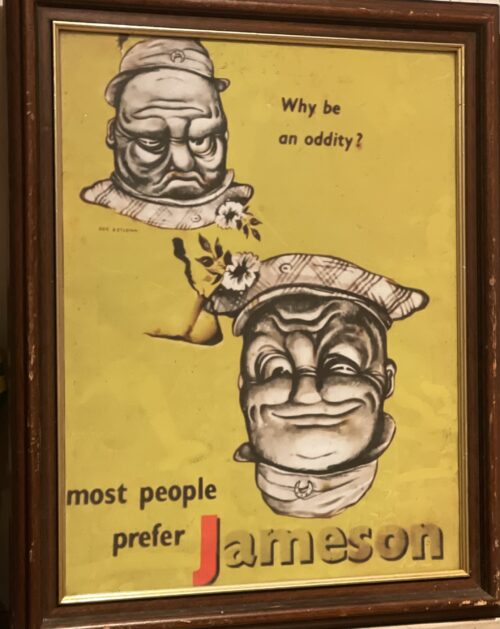










 |
|
 |
|
| Introduced | 1879, renamed as Paddy in 1912 |
|---|---|

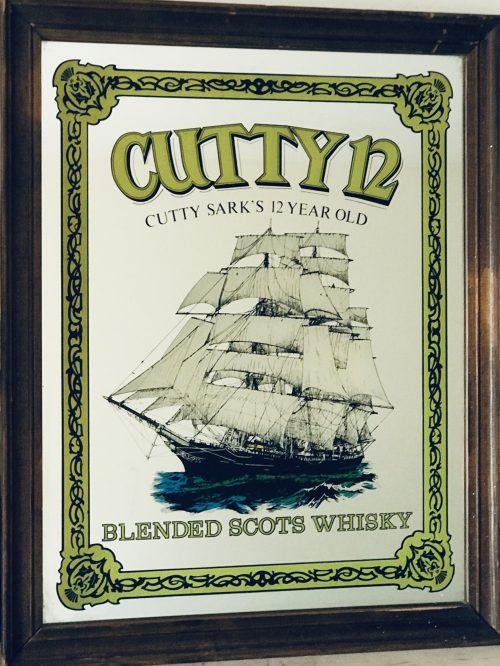




 The young John Brannick soon demonstrated a natural flair for the craft of whiskey-making. These early years, working within the hallowed halls of the John’s Lane Distillery, laid the foundations for his later exploits within the industry. It wasn’t long before the other great distilleries took note of his growing reputation and in 1852 George Roe & Sons enticed Brannick to join the House of George Roe & Co with the promise that he would some day become a Master Distiller.After nearly 20 years of perfecting his craft with the House of Roe, Brannick had reached the illustrious position of Master Distiller. His reputation amongst the great distilleries of Dublin was now firmly established, but his ambitions didn’t end there. Brannick had long harboured a burning desire to build the finest distillery in the world, and in 1870, having secured the necessary backing, he resigned his position and struck out on his own, establishing the Dublin Whiskey Distillery Company Limited. DWD.For the next two years Brannick worked on a revolutionary design for his distillery. A site was chosen, less than a mile north of Dublin’s city centre, on the banks of the River Tolka, and construction started on 22 July 1872 Exactly one year later, distillation began with the preparation of the first ever DWD wash. Meanwhile, with work on the great distillery underway, Brannick finally fulfilled another long-standing promise and married his sweetheart Mary Hayes on 26 January 1873.
The young John Brannick soon demonstrated a natural flair for the craft of whiskey-making. These early years, working within the hallowed halls of the John’s Lane Distillery, laid the foundations for his later exploits within the industry. It wasn’t long before the other great distilleries took note of his growing reputation and in 1852 George Roe & Sons enticed Brannick to join the House of George Roe & Co with the promise that he would some day become a Master Distiller.After nearly 20 years of perfecting his craft with the House of Roe, Brannick had reached the illustrious position of Master Distiller. His reputation amongst the great distilleries of Dublin was now firmly established, but his ambitions didn’t end there. Brannick had long harboured a burning desire to build the finest distillery in the world, and in 1870, having secured the necessary backing, he resigned his position and struck out on his own, establishing the Dublin Whiskey Distillery Company Limited. DWD.For the next two years Brannick worked on a revolutionary design for his distillery. A site was chosen, less than a mile north of Dublin’s city centre, on the banks of the River Tolka, and construction started on 22 July 1872 Exactly one year later, distillation began with the preparation of the first ever DWD wash. Meanwhile, with work on the great distillery underway, Brannick finally fulfilled another long-standing promise and married his sweetheart Mary Hayes on 26 January 1873.



“The extraordinary story of the ‘Finest Whiskey in the World’, a tale of one man’s vision, gloriously realised, only to be crushed by history and destroyed in a very Irish betrayal.” Tomas – DWD Brand Ambassador
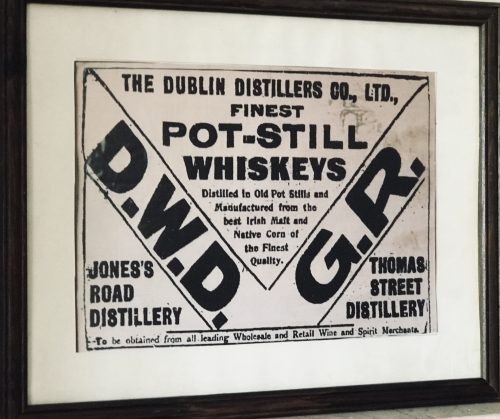


 The young John Brannick soon demonstrated a natural flair for the craft of whiskey-making. These early years, working within the hallowed halls of the John’s Lane Distillery, laid the foundations for his later exploits within the industry. It wasn’t long before the other great distilleries took note of his growing reputation and in 1852 George Roe & Sons enticed Brannick to join the House of George Roe & Co with the promise that he would some day become a Master Distiller.After nearly 20 years of perfecting his craft with the House of Roe, Brannick had reached the illustrious position of Master Distiller. His reputation amongst the great distilleries of Dublin was now firmly established, but his ambitions didn’t end there. Brannick had long harboured a burning desire to build the finest distillery in the world, and in 1870, having secured the necessary backing, he resigned his position and struck out on his own, establishing the Dublin Whiskey Distillery Company Limited. DWD.For the next two years Brannick worked on a revolutionary design for his distillery. A site was chosen, less than a mile north of Dublin’s city centre, on the banks of the River Tolka, and construction started on 22 July 1872 Exactly one year later, distillation began with the preparation of the first ever DWD wash. Meanwhile, with work on the great distillery underway, Brannick finally fulfilled another long-standing promise and married his sweetheart Mary Hayes on 26 January 1873.
The young John Brannick soon demonstrated a natural flair for the craft of whiskey-making. These early years, working within the hallowed halls of the John’s Lane Distillery, laid the foundations for his later exploits within the industry. It wasn’t long before the other great distilleries took note of his growing reputation and in 1852 George Roe & Sons enticed Brannick to join the House of George Roe & Co with the promise that he would some day become a Master Distiller.After nearly 20 years of perfecting his craft with the House of Roe, Brannick had reached the illustrious position of Master Distiller. His reputation amongst the great distilleries of Dublin was now firmly established, but his ambitions didn’t end there. Brannick had long harboured a burning desire to build the finest distillery in the world, and in 1870, having secured the necessary backing, he resigned his position and struck out on his own, establishing the Dublin Whiskey Distillery Company Limited. DWD.For the next two years Brannick worked on a revolutionary design for his distillery. A site was chosen, less than a mile north of Dublin’s city centre, on the banks of the River Tolka, and construction started on 22 July 1872 Exactly one year later, distillation began with the preparation of the first ever DWD wash. Meanwhile, with work on the great distillery underway, Brannick finally fulfilled another long-standing promise and married his sweetheart Mary Hayes on 26 January 1873.



“The extraordinary story of the ‘Finest Whiskey in the World’, a tale of one man’s vision, gloriously realised, only to be crushed by history and destroyed in a very Irish betrayal.” Tomas – DWD Brand Ambassador
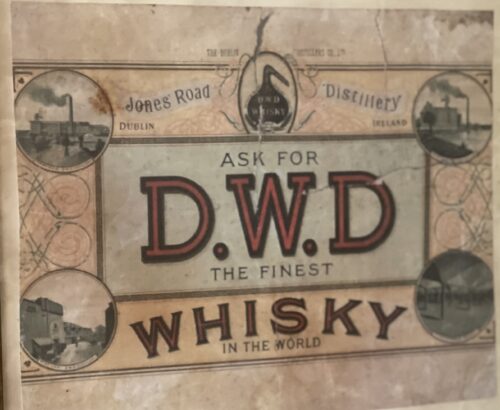
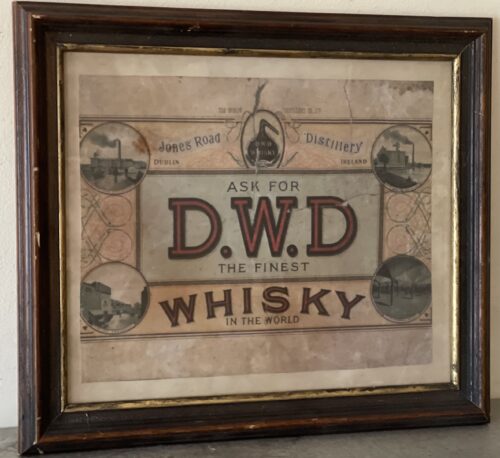


 The young John Brannick soon demonstrated a natural flair for the craft of whiskey-making. These early years, working within the hallowed halls of the John’s Lane Distillery, laid the foundations for his later exploits within the industry. It wasn’t long before the other great distilleries took note of his growing reputation and in 1852 George Roe & Sons enticed Brannick to join the House of George Roe & Co with the promise that he would some day become a Master Distiller.After nearly 20 years of perfecting his craft with the House of Roe, Brannick had reached the illustrious position of Master Distiller. His reputation amongst the great distilleries of Dublin was now firmly established, but his ambitions didn’t end there. Brannick had long harboured a burning desire to build the finest distillery in the world, and in 1870, having secured the necessary backing, he resigned his position and struck out on his own, establishing the Dublin Whiskey Distillery Company Limited. DWD.For the next two years Brannick worked on a revolutionary design for his distillery. A site was chosen, less than a mile north of Dublin’s city centre, on the banks of the River Tolka, and construction started on 22 July 1872 Exactly one year later, distillation began with the preparation of the first ever DWD wash. Meanwhile, with work on the great distillery underway, Brannick finally fulfilled another long-standing promise and married his sweetheart Mary Hayes on 26 January 1873.
The young John Brannick soon demonstrated a natural flair for the craft of whiskey-making. These early years, working within the hallowed halls of the John’s Lane Distillery, laid the foundations for his later exploits within the industry. It wasn’t long before the other great distilleries took note of his growing reputation and in 1852 George Roe & Sons enticed Brannick to join the House of George Roe & Co with the promise that he would some day become a Master Distiller.After nearly 20 years of perfecting his craft with the House of Roe, Brannick had reached the illustrious position of Master Distiller. His reputation amongst the great distilleries of Dublin was now firmly established, but his ambitions didn’t end there. Brannick had long harboured a burning desire to build the finest distillery in the world, and in 1870, having secured the necessary backing, he resigned his position and struck out on his own, establishing the Dublin Whiskey Distillery Company Limited. DWD.For the next two years Brannick worked on a revolutionary design for his distillery. A site was chosen, less than a mile north of Dublin’s city centre, on the banks of the River Tolka, and construction started on 22 July 1872 Exactly one year later, distillation began with the preparation of the first ever DWD wash. Meanwhile, with work on the great distillery underway, Brannick finally fulfilled another long-standing promise and married his sweetheart Mary Hayes on 26 January 1873.



“The extraordinary story of the ‘Finest Whiskey in the World’, a tale of one man’s vision, gloriously realised, only to be crushed by history and destroyed in a very Irish betrayal.” Tomas – DWD Brand Ambassador


"...we took the action deliberately, having thought over the matter and talked it over between us. [Seán] Treacyhad stated to me that the only way of starting a war was to kill someone, and we wanted to start a war, so we intended to kill some of the police whom we looked upon as the foremost and most important branch of the enemy forces ... The only regret that we had following the ambush was that there were only two policemen in it, instead of the six we had expected..."During the conflict, the British put a £1,000 price on Breen's head, which was later raised to £10,000.He quickly established himself as a leader within the Irish Republican Army (IRA). He was known for his courage. On 13 May 1919, he helped rescue his comrade Seán Hogan at gunpoint from a heavily guarded train at Knocklong station in County Limerick. Breen, who was wounded, remembered how the battalion was "vehemently denounced as a cold-blooded assassins" and roundly condemned by the Catholic Church. After the fight, Seán Treacy, Séumas Robinson and Breen met Michael Collins in Dublin, where they were told to escape from the area. They agreed they would "fight it out, of course". Breen and Treacy shot their way out through a British military cordon in the northern suburb of Drumcondra (Fernside). They escaped, only for Treacy to be killed the next day. Breen was shot at least four times, twice in the lung. The British reaction was to make Tipperary a 'Special Military Area', with curfews and travel permits. Volunteer GHQ authorised enterprising attacks on barracks. Richard Mulcahy noted that British policy had "pushed rather turbulent spirits such as Breen and Treacy into the Dublin area". The inculcation of the principles of guerrilla warfare was to become an essential part of all training. They joined Collins' Squad of assassins, later known as the Dublin Guard, when Tipperary became "too hot for them". and Dublin was the centre of the war. Breen was present in December 1919 at the ambush in Ashtown beside Phoenix Park in Dublin where Martin Savage was killed while trying to assassinate the Lord Lieutenant of Ireland, Viscount French. The IRA men hid behind hedges and a dungheap as the convoy of vehicles came past. They had been instructed to ignore the first car, but this contained their target, Lord French. Their roadblock failed as a policeman removed the horse and cart intended to stop the car. Breen rejected the Anglo-Irish Treaty, which made him, like many others, angry and embittered:
I would never have handled a gun or fired a shot… to obtain this Treaty… writing on the second anniversary of Martin Savage's death, do you suppose that he sacrificed his life in attempting to kill one British Governor-General to make room for another British Governor-General?Regarding the continued existence of Northern Ireland from 1922, and an inevitable further war to conquer it to create a united Ireland, Breen commented:
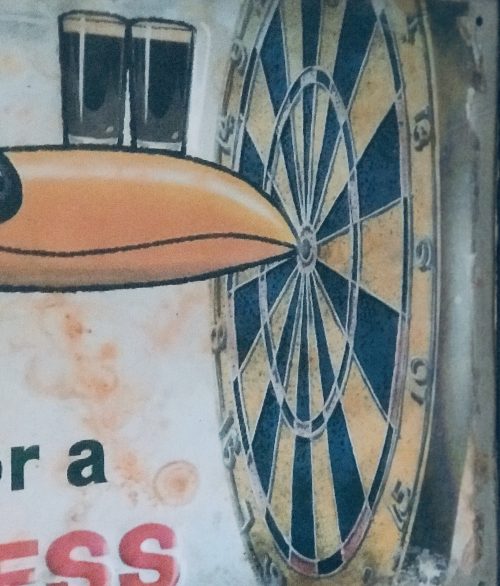

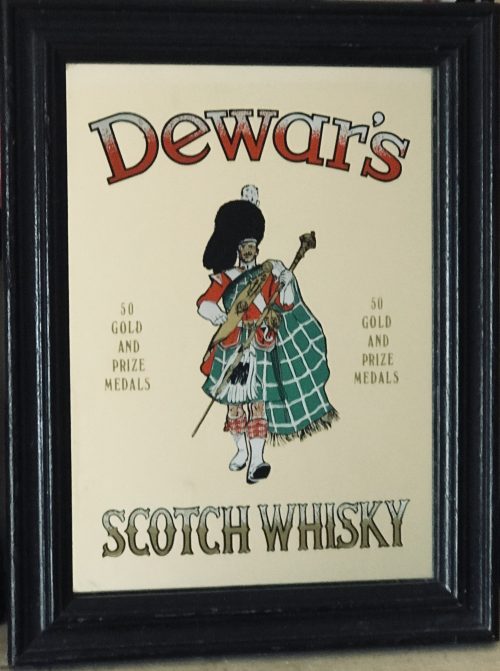











Bunratty Mead is a traditional wine, produced from an ancient Irish recipe of pure honey, fruit of the vine and natural herbs. It's a medium sweet wine, with a wide taste appeal, and suitable for all important occasions. As the drink of the ancient Celts, Mead derives much of its appeal through Irish Folklore, which is legendary of this mystical drink with strong attachments to Ireland.
|
In the days of old when knights were bold, the drink of choice was mead. Much more than an extraordinary legendary drink with strong attachments to Ireland, mead can be traced back as many centuries before Christ. It became the chief drink of the Irish and was often referred to in Gaelic poetry. Mead's influence was so great that the halls of Tara, where the High Kings of Ireland ruled, were called the house of the Mead Circle. Its fame spread quickly and soon a medieval banquet was not complete without it. |
 |
 |
Even the church recognised the value of this fabulous drink. Legend has it that St. Finian lived for six days a week on bread and water, but on Sundays ate salmon and drank a full sup of mead. In addition, St. Bridget performed a miracle when mead could not be located for the king of Leinster. She blessed an empty vessel, which miraculously filled with Mead. |
|
|


The ballad is named after a crossroads between Ennis and Tulla in east Clare, the site of a centuries-old horse fair held every June. In 1870 a young man from the locality, Michael Considine, bade farewell to his sweetheart Mary McNamara and left for the US. He hoped to earn sufficient money to enable her to join him.
However, he died in California in 1873. Before his death he wrote a poem dedicated to Mary which he posted to his six-year-old nephew, John, back home.
Seventy years later McMahon was given the words at a house party. His singing of the ballad was warmly received by those in attendance, who included the author’s nephew, then an elderly man.
Many singers have recorded the ballad, but McMahon insisted his was the authentic version. He told The Irish Times in 2006: “Nowadays the song is not sung correctly. Many singers put words that are not in it [at] all, singing stuff like ‘Johnny, I love you still’. There’s no ‘Johnny’ in that song.” The late writer Bryan MacMahon was an early admirer of his namesake’s talent and had high praise for his ability as a performer and entertainer.
Singer Maura O’Connell warmed to Robbie McMahon’s “great big personality”, and said that he made Spancil Hill his own.
Born in 1926, he was the third youngest of 11 children, one of whom died in childhood, and grew up on his father’s farm in Clooney, near Ennis. There was music in the family, and all the children sang. Young Robbie was something of a mischief-maker, hence the title of an album he recorded later in life – The Black Sheep.
He began singing in public at the age of 18, and went on to win 16 all-Ireland titles at fleadhanna around the country. In the 1950s, 1960s and 1970s he toured Britain and the US with a troupe of traditional musicians under the auspices of Comhaltas Ceoltóirí Éireann.
As a songwriter, he is best known for the Fleadh Down in Ennis, which celebrates the 1956 all-Ireland fleadh cheoil. Other compositions include Come on the Banner, the Red Cross Social and the Feakle Hurlers, in honour of the 1988 Clare county champions.
A lilter, he was renowned for his performance of the Mason’s Apron, in which he simulated the sound of both the fiddle and accompanying banjo.
Possessed of a store of jokes, ranging from the hilarious to the unprintable, he was as much a character as a singer and was more comfortable with the craic and banter of casual sessions than with formal concerts.
He was the subject of a film documentary Last Night As I Lay Dreaming. Clare County Council hosted a civic reception in his honour in 2010, and he was the recipient of the Fleadh Nua Gradam Ceoil in 2011.
He is survived by his wife Maura, daughters Fiona, Noleen and Dympna and son Donal.





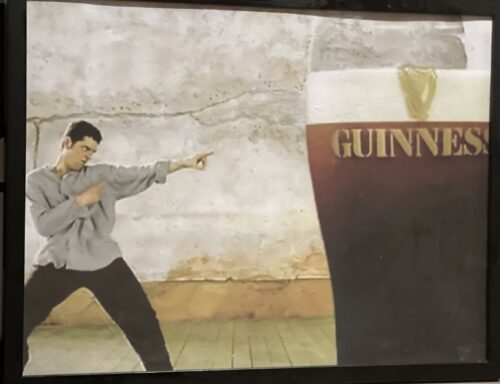




The former beer of choice of An Taoiseach Bertie Ahern,the Bass Ireland Brewery operated on the Glen Road in West Belfast for 107 years until its closure in 2004.But despite its popularity, this ale would be the cause of bitter controversy in the 1930s as you can learn below.
Founded in 1777 by William Bass in Burton-upon-Trent, Staffordshire, England.The main brand was Bass Pale Ale, once the highest-selling beer in the UK.By 1877, Bass had become the largest brewery in the world, with an annual output of one million barrels.Its pale ale was exported throughout the British Empire, and the company's distinctive red triangle became the UK's first registered trade mark. In the early 1930s republicans in Dublin and elsewhere waged a campaign of intimidation against publicans who sold Bass ale, which involved violent tactics and grabbed headlines at home and further afield. This campaign occurred within a broader movement calling for the boycott of British goods in Ireland, spearheaded by the IRA. Bass was not alone a British product, but republicans took issue with Colonel John Gretton, who was chairman of the company and a Conservative politician in his day.In Britain,Ireland and the Second World War, Ian Woods notes that the republican newspaper An Phoblacht set the republican boycott of Bass in a broader context , noting that there should be “No British ales. No British sweets or chocolate. Shoulder to shoulder for a nationwide boycott of British goods. Fling back the challenge of the robber empire.”
In late 1932, Irish newspapers began to report on a sustained campaign against Bass ale, which was not strictly confined to Dublin. On December 5th 1932, The Irish Times asked:
Will there be free beer in the Irish Free State at the end of this week? The question is prompted by the orders that are said to have been given to publicans in Dublin towards the end of last week not to sell Bass after a specified date.
The paper went on to claim that men visited Dublin pubs and told publicans “to remove display cards advertising Bass, to dispose of their stock within a week, and not to order any more of this ale, explaining that their instructions were given in furtherance of the campaign to boycott British goods.” The paper proclaimed a ‘War on English Beer’ in its headline. The same routine, of men visiting and threatening public houses, was reported to have happened in Cork.
It was later reported that on November 25th young men had broken into the stores owned by Bass at Moore Lane and attempted to do damage to Bass property. When put before the courts, it was reported that the republicans claimed that “Colonel Gretton, the chairman of the company, was a bitter enemy of the Irish people” and that he “availed himself of every opportunity to vent his hate, and was an ardent supporter of the campaign of murder and pillage pursued by the Black and Tans.” Remarkably, there were cheers in court as the men were found not guilty, and it was noted that they had no intention of stealing from Bass, and the damage done to the premises amounted to less than £5.
A campaign of intimidation carried into January 1933, when pubs who were not following the boycott had their signs tarred, and several glass signs advertising the ale were smashed across the city. ‘BOYCOTT BRITISH GOODS’ was painted across several Bass advertisements in the city.
Throughout 1933, there were numerous examples of republicans entering pubs and smashing the supply of Bass bottles behind the counter. This activity was not confined to Dublin,as this report from late August shows. It was noted that the men publicly stated that they belonged to the IRA.
September appears to have been a particularly active period in the boycott, with Brian Hanley identifying Dublin, Tralee, Naas, Drogheda and Waterford among the places were publicans were targetted in his study The IRA: 1926-1936. One of the most interesting incidents occurring in Dun Laoghaire. There, newspapers reported that on September 4th 1933 “more than fifty young men marched through the streets” before raiding the premises of Michael Moynihan, a local publican. Bottles of Bass were flung onto the roadway and advertisements destroyed. Five young men were apprehended for their role in the disturbances, and a series of court cases nationwide would insure that the Bass boycott was one of the big stories of September 1933.
The young men arrested in Dun Laoghaire refused to give their name or any information to the police, and on September 8th events at the Dublin District Court led to police baton charging crowds. The Irish Times reported that about fifty supporters of the young men gathered outside the court with placards such as ‘Irish Goods for Irish People’, and inside the court a cry of ‘Up The Republic!’ led to the judge slamming the young men, who told him they did not recognise his court. The night before had seen some anti-Bass activity in the city, with the smashing of Bass signs at Burgh Quay. This came after attacks on pubs at Lincoln Place and Chancery Street. It wasn’t long before Mountjoy and other prisons began to home some of those involved in the Boycott Bass campaign, which the state was by now eager to suppress.

An undated image of a demonstration to boycott British goods. Credit: http://irishmemory.blogspot.ie/
This dramatic court appearance was followed by similar scenes in Kilmainham, where twelve men were brought before the courts for a raid on the Dead Man’s Pub, near to Palmerstown in West Dublin. Almost all in their 20s, these men mostly gave addresses in Clondalkin. Their court case was interesting as charges of kidnapping were put forward, as Michael Murray claimed the men had driven him to the Featherbed mountain. By this stage, other Bass prisoners had begun a hungerstrike, and while a lack of evidence allowed the men to go free, heavy fines were handed out to an individual who the judge was certain had been involved.
The decision to go on hungerstrike brought considerable attention on prisoners in Mountjoy, and Maud Gonne MacBride spoke to the media on their behalf, telling the Irish Press on September 18th that political treatment was sought by the men. This strike had begun over a week previously on the 10th, and by the 18th it was understood that nine young men were involved. Yet by late September, it was evident the campaign was slowing down, particularly in Dublin.
The controversy around the boycott Bass campaign featured in Dáil debates on several occasions. In late September Eamonn O’Neill T.D noted that he believed such attacks were being allowed to be carried out “with a certain sort of connivance from the Government opposite”, saying:
I suppose the Minister is aware that this campaign against Bass, the destruction of full bottles of Bass, the destruction of Bass signs and the disfigurement of premises which Messrs. Bass hold has been proclaimed by certain bodies to be a national campaign in furtherance of the “Boycott British Goods” policy. I put it to the Minister that the compensation charges in respect of such claims should be made a national charge as it is proclaimed to be a national campaign and should not be placed on the overburdened taxpayers in the towns in which these terrible outrages are allowed to take place with a certain sort of connivance from the Government opposite.
Another contribution in the Dáil worth quoting came from Daniel Morrissey T.D, perhaps a Smithwicks man, who felt it necessary to say that we were producing “an ale that can compare favourably with any ale produced elsewhere” while condemning the actions of those targeting publicans:
I want to say that so far as I am concerned I have no brief good, bad, or indifferent, for Bass’s ale. We are producing in this country at the moment—and I am stating this quite frankly as one who has a little experience of it—an ale that can compare favourably with any ale produced elsewhere. But let us be quite clear that if we are going to have tariffs or embargoes, no tariffs or embargoes can be issued or given effect to in this country by any person, any group of persons, or any organisation other than the Government elected by the people of the country.
Tim Pat Coogan claims in his history of the IRA that this boycott brought the republican movement into conflict with the Army Comrades Association, later popularly known as the ‘Blueshirts’. He claims that following attacks in Dublin in December 1932, “the Dublin vitners appealed to the ACA for protection and shipments of Bass were guarded by bodyguards of ACA without further incident.” Yet it is undeniable there were many incidents of intimidation against suppliers and deliverers of the product into 1933.
Not all republicans believed the ‘Boycott Bass’ campaign had been worthwhile. Patrick Byrne, who would later become secretary within the Republican Congress group, later wrote that this was a time when there were seemingly bigger issues, like mass unemployment and labour disputes in Belfast, yet:
In this situation, while the revolution was being served up on a plate in Belfast, what was the IRA leadership doing? Organising a ‘Boycott Bass’ Campaign. Because of some disparaging remarks the Bass boss, Colonel Gretton, was reported to have made about the Irish, some IRA leaders took umbrage and sent units out onto the streets of Dublin and elsewhere to raid pubs, terrify the customers, and destroy perfectly good stocks of bottled Bass, an activity in which I regret to say I was engaged.
Historian Brian Hanley has noted by late 1933 “there was little effort to boycott anything except Bass and the desperation of the IRA in hoping violence would revive the campaign was in fact an admission of its failure. At the 1934 convention the campaign was quietly abandoned.”
Interestingly, this wasn’t the last time republicans would threaten Bass. In 1986 The Irish Times reported that Bass and Guinness were both threatened on the basis that they were supplying to British Army bases and RUC stations, on the basis of providing a service to security forces.
Origins : Co Galway
Dimensions:35 cm x 45cm





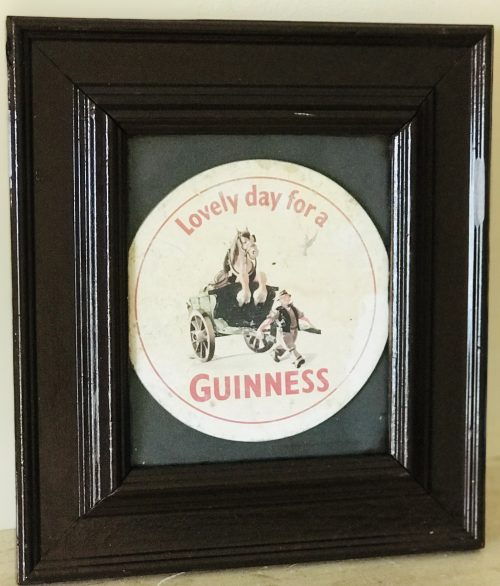




 Gallaher continued to work at his desk every day until a few months before he died in 1927. He was remembered as a courteous, kindly man, a generous employer, and an extremely talented businessman. His plain ways endeared him to people. He left an estate valued at £503,954.The company was principally inherited by his nephew, John Gallaher Michaels (1880 – 1948). Michaels had worked for his uncle for many years, and had been manger of the American operations.The Constructive Finance & Investment Co, led by Edward de Stein (1887 – 1965), acquired the entire share capital of Gallaher for several million pounds in 1929, and offered shares to the public.Why Michaels divested his stake in Gallaher remains unclear, but he, his uncle and his brother all lacked heirs, so perhaps he simply wished to retire and pass on management of the company to others.A new factory was established at East Wall, Dublin for £250,000 in 1929. The East Wall factory was closed with the loss of 400 jobs, following the introduction of a tariff on businesses not majority-owned by Irish residents, in 1932.Imperial Tobacco acquired 51 percent of Gallaher for £1.25 million in 1932. Gallaher retained its managerial independence, and the Imperial Tobacco move was executed with the intention of blocking a potential bid for Gallaher from the American Tobacco Company.Gallaher was the fourth largest cigarette manufacturer in Britain by 1932.Gallaher acquired Peter Jackson in 1934. The firm manufactured Du Maurier cigarettes, which was the first popular filter-tip brand in Britain.E Robinson & Son, manufacturers of Senior Service cigarettes, was acquired in 1937. Senior Service had been highly successful within the Manchester area, but Robinson’s had lacked the capital to take the brand nationwide.
J Freeman & Son, cigar manufacturers of Cardiff, was acquired in 1947.Gallaher acquired Cope Brothers of Liverpool, owners of the Old Holborn brand, in 1952.Benson & Hedges was acquired, mainly for the prestigious brand name, in 1955.Gallaher sales grew rapidly in the 1950s. Senior Service and Park Drive became respectively the third and fourth highest selling cigarettes in Britain in 1959, by which time Gallaher held 30 percent of the British tobacco market.Gallaher acquired J Wix & Sons Ltd, the fast-growing manufacturer of Kensitas cigarettes, from the American Tobacco Company in 1961.The Imperial Tobacco stake in Gallaher had been diluted to 37 percent by 1961.
Gallaher claimed 37 percent of the British cigarette market by 1962.A large factory was established at Airton Road, Dublin in 1963.Silk Cut was launched as a low-tar brand in 1964.
Gallaher employed 15,000 people in 1965, and had an authorised capital of £45 million in 1968. The company held 27 percent of the British tobacco market in 1968.Benson & Hedges was the leading king-size cigarette brand in Britain by 1981.The Belfast factory was closed in 1988. 700 jobs were lost, and production was relocated to Ballymena in County Antrim.
A cigar factory in Port Talbot, Wales was closed with the loss of 370 jobs in 1994.The Manchester cigarette factory was closed in 2000-1. Nearly 1,000 jobs were lost. Production was transferred to Ballymena, where 300 extra jobs were created.Japan Tobacco acquired Gallaher, by then the fifth largest tobacco company in the world, for £7.5 billion in cash in 2007.Ballymena, the last remaining tobacco factory in the UK, was closed in 2017, with production relocated to Eastern Europe. 860 jobs were lost.
Gallaher continued to work at his desk every day until a few months before he died in 1927. He was remembered as a courteous, kindly man, a generous employer, and an extremely talented businessman. His plain ways endeared him to people. He left an estate valued at £503,954.The company was principally inherited by his nephew, John Gallaher Michaels (1880 – 1948). Michaels had worked for his uncle for many years, and had been manger of the American operations.The Constructive Finance & Investment Co, led by Edward de Stein (1887 – 1965), acquired the entire share capital of Gallaher for several million pounds in 1929, and offered shares to the public.Why Michaels divested his stake in Gallaher remains unclear, but he, his uncle and his brother all lacked heirs, so perhaps he simply wished to retire and pass on management of the company to others.A new factory was established at East Wall, Dublin for £250,000 in 1929. The East Wall factory was closed with the loss of 400 jobs, following the introduction of a tariff on businesses not majority-owned by Irish residents, in 1932.Imperial Tobacco acquired 51 percent of Gallaher for £1.25 million in 1932. Gallaher retained its managerial independence, and the Imperial Tobacco move was executed with the intention of blocking a potential bid for Gallaher from the American Tobacco Company.Gallaher was the fourth largest cigarette manufacturer in Britain by 1932.Gallaher acquired Peter Jackson in 1934. The firm manufactured Du Maurier cigarettes, which was the first popular filter-tip brand in Britain.E Robinson & Son, manufacturers of Senior Service cigarettes, was acquired in 1937. Senior Service had been highly successful within the Manchester area, but Robinson’s had lacked the capital to take the brand nationwide.
J Freeman & Son, cigar manufacturers of Cardiff, was acquired in 1947.Gallaher acquired Cope Brothers of Liverpool, owners of the Old Holborn brand, in 1952.Benson & Hedges was acquired, mainly for the prestigious brand name, in 1955.Gallaher sales grew rapidly in the 1950s. Senior Service and Park Drive became respectively the third and fourth highest selling cigarettes in Britain in 1959, by which time Gallaher held 30 percent of the British tobacco market.Gallaher acquired J Wix & Sons Ltd, the fast-growing manufacturer of Kensitas cigarettes, from the American Tobacco Company in 1961.The Imperial Tobacco stake in Gallaher had been diluted to 37 percent by 1961.
Gallaher claimed 37 percent of the British cigarette market by 1962.A large factory was established at Airton Road, Dublin in 1963.Silk Cut was launched as a low-tar brand in 1964.
Gallaher employed 15,000 people in 1965, and had an authorised capital of £45 million in 1968. The company held 27 percent of the British tobacco market in 1968.Benson & Hedges was the leading king-size cigarette brand in Britain by 1981.The Belfast factory was closed in 1988. 700 jobs were lost, and production was relocated to Ballymena in County Antrim.
A cigar factory in Port Talbot, Wales was closed with the loss of 370 jobs in 1994.The Manchester cigarette factory was closed in 2000-1. Nearly 1,000 jobs were lost. Production was transferred to Ballymena, where 300 extra jobs were created.Japan Tobacco acquired Gallaher, by then the fifth largest tobacco company in the world, for £7.5 billion in cash in 2007.Ballymena, the last remaining tobacco factory in the UK, was closed in 2017, with production relocated to Eastern Europe. 860 jobs were lost.


 Gallaher continued to work at his desk every day until a few months before he died in 1927. He was remembered as a courteous, kindly man, a generous employer, and an extremely talented businessman. His plain ways endeared him to people. He left an estate valued at £503,954.The company was principally inherited by his nephew, John Gallaher Michaels (1880 – 1948). Michaels had worked for his uncle for many years, and had been manger of the American operations.The Constructive Finance & Investment Co, led by Edward de Stein (1887 – 1965), acquired the entire share capital of Gallaher for several million pounds in 1929, and offered shares to the public.Why Michaels divested his stake in Gallaher remains unclear, but he, his uncle and his brother all lacked heirs, so perhaps he simply wished to retire and pass on management of the company to others.A new factory was established at East Wall, Dublin for £250,000 in 1929. The East Wall factory was closed with the loss of 400 jobs, following the introduction of a tariff on businesses not majority-owned by Irish residents, in 1932.Imperial Tobacco acquired 51 percent of Gallaher for £1.25 million in 1932. Gallaher retained its managerial independence, and the Imperial Tobacco move was executed with the intention of blocking a potential bid for Gallaher from the American Tobacco Company.Gallaher was the fourth largest cigarette manufacturer in Britain by 1932.Gallaher acquired Peter Jackson in 1934. The firm manufactured Du Maurier cigarettes, which was the first popular filter-tip brand in Britain.E Robinson & Son, manufacturers of Senior Service cigarettes, was acquired in 1937. Senior Service had been highly successful within the Manchester area, but Robinson’s had lacked the capital to take the brand nationwide.
J Freeman & Son, cigar manufacturers of Cardiff, was acquired in 1947.Gallaher acquired Cope Brothers of Liverpool, owners of the Old Holborn brand, in 1952.Benson & Hedges was acquired, mainly for the prestigious brand name, in 1955.Gallaher sales grew rapidly in the 1950s. Senior Service and Park Drive became respectively the third and fourth highest selling cigarettes in Britain in 1959, by which time Gallaher held 30 percent of the British tobacco market.Gallaher acquired J Wix & Sons Ltd, the fast-growing manufacturer of Kensitas cigarettes, from the American Tobacco Company in 1961.The Imperial Tobacco stake in Gallaher had been diluted to 37 percent by 1961.
Gallaher claimed 37 percent of the British cigarette market by 1962.A large factory was established at Airton Road, Dublin in 1963.Silk Cut was launched as a low-tar brand in 1964.
Gallaher employed 15,000 people in 1965, and had an authorised capital of £45 million in 1968. The company held 27 percent of the British tobacco market in 1968.Benson & Hedges was the leading king-size cigarette brand in Britain by 1981.The Belfast factory was closed in 1988. 700 jobs were lost, and production was relocated to Ballymena in County Antrim.
A cigar factory in Port Talbot, Wales was closed with the loss of 370 jobs in 1994.The Manchester cigarette factory was closed in 2000-1. Nearly 1,000 jobs were lost. Production was transferred to Ballymena, where 300 extra jobs were created.Japan Tobacco acquired Gallaher, by then the fifth largest tobacco company in the world, for £7.5 billion in cash in 2007.Ballymena, the last remaining tobacco factory in the UK, was closed in 2017, with production relocated to Eastern Europe. 860 jobs were lost.
Gallaher continued to work at his desk every day until a few months before he died in 1927. He was remembered as a courteous, kindly man, a generous employer, and an extremely talented businessman. His plain ways endeared him to people. He left an estate valued at £503,954.The company was principally inherited by his nephew, John Gallaher Michaels (1880 – 1948). Michaels had worked for his uncle for many years, and had been manger of the American operations.The Constructive Finance & Investment Co, led by Edward de Stein (1887 – 1965), acquired the entire share capital of Gallaher for several million pounds in 1929, and offered shares to the public.Why Michaels divested his stake in Gallaher remains unclear, but he, his uncle and his brother all lacked heirs, so perhaps he simply wished to retire and pass on management of the company to others.A new factory was established at East Wall, Dublin for £250,000 in 1929. The East Wall factory was closed with the loss of 400 jobs, following the introduction of a tariff on businesses not majority-owned by Irish residents, in 1932.Imperial Tobacco acquired 51 percent of Gallaher for £1.25 million in 1932. Gallaher retained its managerial independence, and the Imperial Tobacco move was executed with the intention of blocking a potential bid for Gallaher from the American Tobacco Company.Gallaher was the fourth largest cigarette manufacturer in Britain by 1932.Gallaher acquired Peter Jackson in 1934. The firm manufactured Du Maurier cigarettes, which was the first popular filter-tip brand in Britain.E Robinson & Son, manufacturers of Senior Service cigarettes, was acquired in 1937. Senior Service had been highly successful within the Manchester area, but Robinson’s had lacked the capital to take the brand nationwide.
J Freeman & Son, cigar manufacturers of Cardiff, was acquired in 1947.Gallaher acquired Cope Brothers of Liverpool, owners of the Old Holborn brand, in 1952.Benson & Hedges was acquired, mainly for the prestigious brand name, in 1955.Gallaher sales grew rapidly in the 1950s. Senior Service and Park Drive became respectively the third and fourth highest selling cigarettes in Britain in 1959, by which time Gallaher held 30 percent of the British tobacco market.Gallaher acquired J Wix & Sons Ltd, the fast-growing manufacturer of Kensitas cigarettes, from the American Tobacco Company in 1961.The Imperial Tobacco stake in Gallaher had been diluted to 37 percent by 1961.
Gallaher claimed 37 percent of the British cigarette market by 1962.A large factory was established at Airton Road, Dublin in 1963.Silk Cut was launched as a low-tar brand in 1964.
Gallaher employed 15,000 people in 1965, and had an authorised capital of £45 million in 1968. The company held 27 percent of the British tobacco market in 1968.Benson & Hedges was the leading king-size cigarette brand in Britain by 1981.The Belfast factory was closed in 1988. 700 jobs were lost, and production was relocated to Ballymena in County Antrim.
A cigar factory in Port Talbot, Wales was closed with the loss of 370 jobs in 1994.The Manchester cigarette factory was closed in 2000-1. Nearly 1,000 jobs were lost. Production was transferred to Ballymena, where 300 extra jobs were created.Japan Tobacco acquired Gallaher, by then the fifth largest tobacco company in the world, for £7.5 billion in cash in 2007.Ballymena, the last remaining tobacco factory in the UK, was closed in 2017, with production relocated to Eastern Europe. 860 jobs were lost.